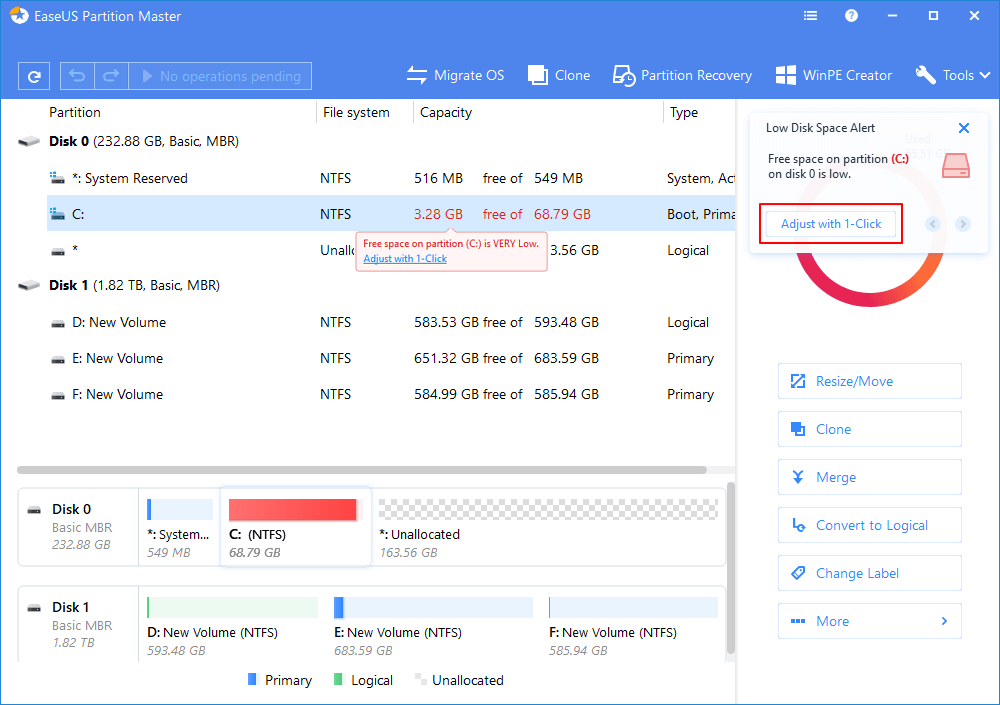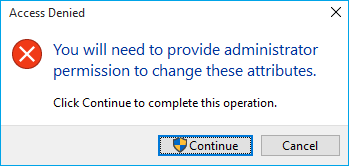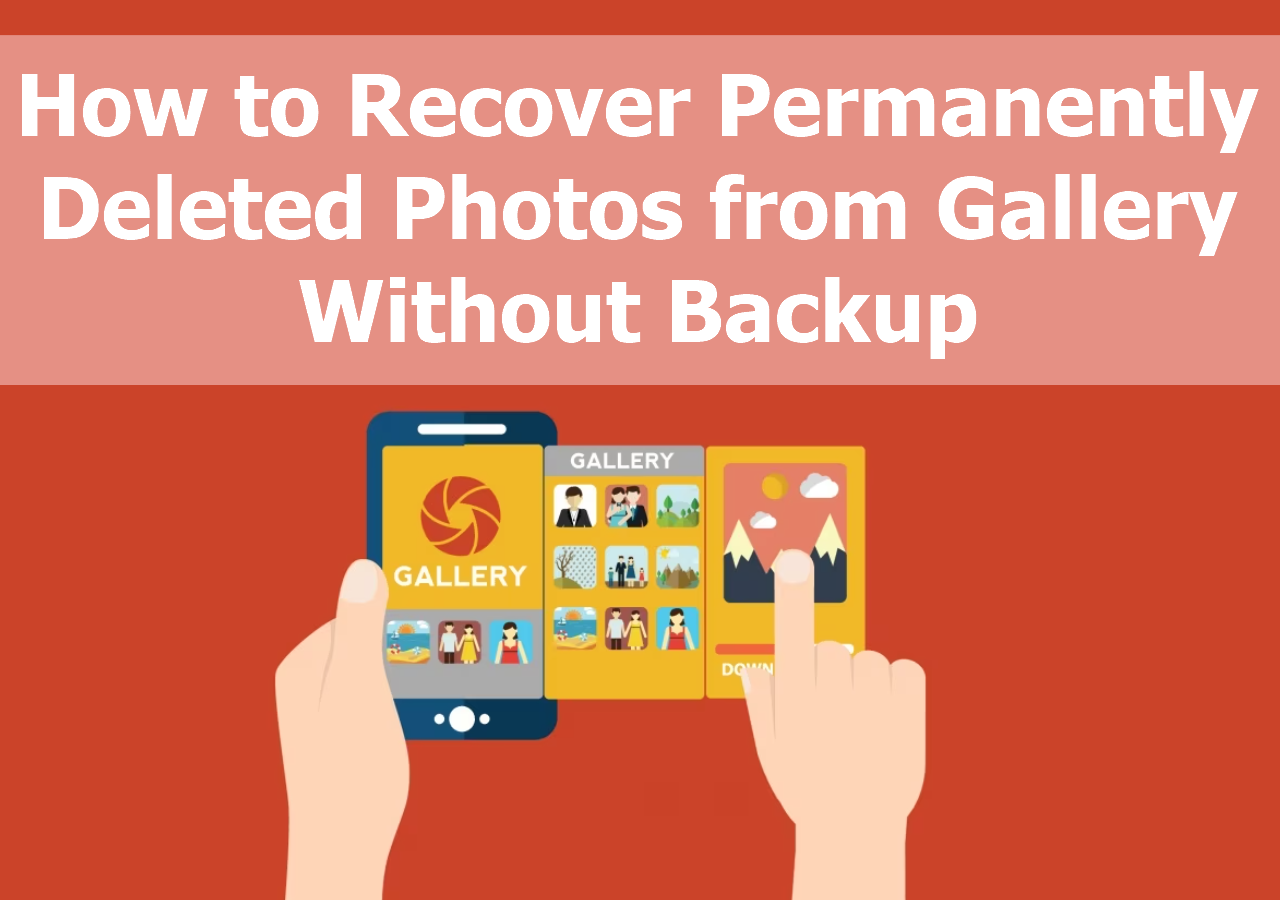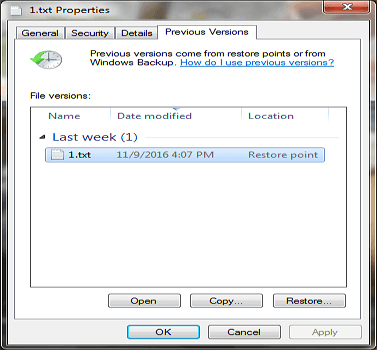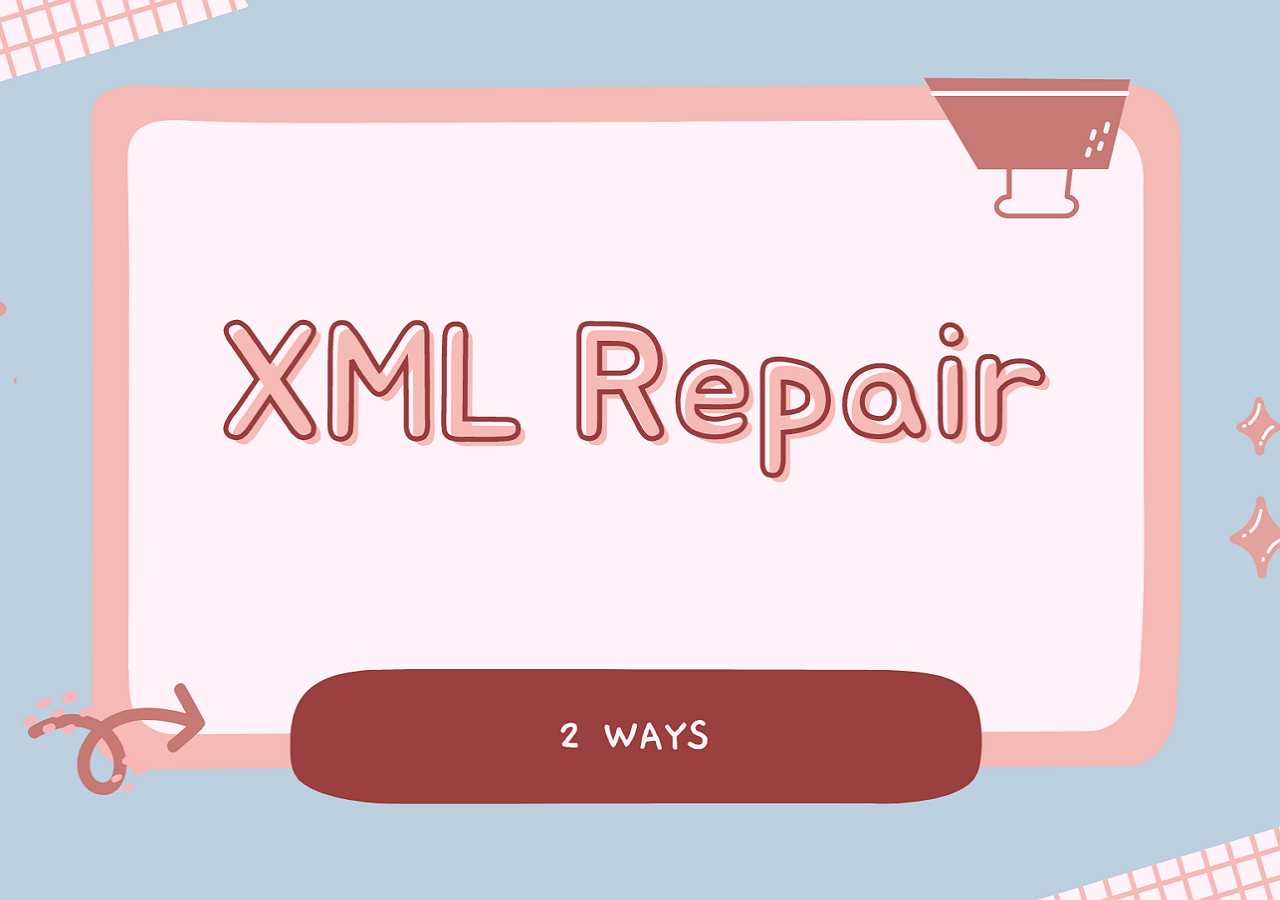-
![]() Inkscape Recovery: How to Recover Lost/Unsaved Inkscape Files
Inkscape Recovery: How to Recover Lost/Unsaved Inkscape Files December 12,2025
December 12,2025 6 min read
6 min read -
![]() 2 Ways to Recover Deleted or Lost Saved Game Files on Xbox One
2 Ways to Recover Deleted or Lost Saved Game Files on Xbox One December 12,2025
December 12,2025 6 min read
6 min read -
![]() My Documents and Settings Folder is Not accessible in Windows 10! Fix It Now!
My Documents and Settings Folder is Not accessible in Windows 10! Fix It Now! December 12,2025
December 12,2025 6 min read
6 min read -
![]() Image Database File Not Ready? 3 Effctive Solutions in 2025 [No Data Loss]
Image Database File Not Ready? 3 Effctive Solutions in 2025 [No Data Loss] December 12,2025
December 12,2025 6 min read
6 min read -
![]() Free Download Hidden File Recovery Software to Recover Hidden Files
Free Download Hidden File Recovery Software to Recover Hidden Files December 12,2025
December 12,2025 6 min read
6 min read -
![]() Recover Cut Files from SD/USB, Windows PC or Android/iPhone Memory [2025 Updated]
Recover Cut Files from SD/USB, Windows PC or Android/iPhone Memory [2025 Updated] December 12,2025
December 12,2025 6 min read
6 min read -
![]() How to Recover Permanently Deleted Photos from Gallery Without Backup
How to Recover Permanently Deleted Photos from Gallery Without Backup December 12,2025
December 12,2025 6 min read
6 min read -
![]() Files Getting Deleted Automatically Without Asking Windows 10/11
Files Getting Deleted Automatically Without Asking Windows 10/11 December 12,2025
December 12,2025 6 min read
6 min read -
![]()
-
![]() How to Recover Corrupted Excel Files in Windows 10 | AI-Powered
How to Recover Corrupted Excel Files in Windows 10 | AI-Powered December 12,2025
December 12,2025 6 min read
6 min read
Page Table of Contents
Overview
"About a week ago, I saw some beautiful pictures on a web page but forgot to save them to my computer. Is there any way that I can find them from the cache files and recover them quickly?" There are three ways to view Chrome cache files easily. The table below is an overview of the solutions, read detailed content for full steps.
| Workable Solutions | Step-by-step Troubleshooting |
|---|---|
| Fix 1. Visit chrome://cache/ | Click the address bar at the top of your Google Chrome window, type About: cache into the box...Full steps |
| Fix 2. Use Chrome extension | Open your Chrome browser and go to the Chrome Web Store. Search for "Web Cache Viewer"...Full steps |
| Fix 3. Use third-party software | You can still view and recover Chrome cache files by using a third-party Chrom cache viewer...Full steps |
Google Chrome Cache File Recovery Overview
Like the above case, sometimes, you might want to view or recover a business logo, an image, an online video or some other web content that you viewed previously on a web page in Google Chrome. Fortunately, cache files make EaseUS Data Recovery Wizard from Google Chrome possible and easy. In order to speed up access to websites, Google Chrome creates a cache on your computer. The browser cache contains information from Internet sites you have visited. And, if you don't clear it, you can view or recover those temporary Internet files easily from the cache files.
Here, we will show you on how to view and recover Google Chrome cache files with Chrome cache viewer. You can try these tutorials to fully retrieve or extract your data from Google Chrome cache files.
How to View Chrome Cache Files Easily
There are several ways to access and view Chrome cache files. You can try any or all of them to view cache files in Google Chrome.
View Cache by visiting chrome://cache/ in Chrome 65
You can view chrome caches by visiting chrome://cache and chrome://view-http-cache. But this only works for Chrome 65. In version 65, this feature has been removed because of the bugs.
Step 1. Click the address bar at the top of your Google Chrome window, type "About: cache" into the box, and press "Enter." A page will appear with a list of cached files and their addresses.
Step 2. Press the "Ctrl + F" keys on your keyboard to open the find bar.
Step 3. Type part of the name or address of a cached file into the find box and press "Enter" to find it. Continue pressing "Enter" to the page through any matching results.
Step 4. Select and copy the full address of the cached file on the page. Then, open the address in Chrome and press "Enter" to load the file from the cache.
Step 5. Right-click the image, page, or script and select "Save As" to save the cached file to your computer.
View Cache Files Using Chrome Extension
If you are using Chrome 66, the above method won't be helpful. However, you can use a Chrome extension to view cache files in Google.
Step 1. Open your Chrome browser and go to the Chrome Web Store.
Step 2. Search for "Web Cache Viewer" and add it to your browser. After installation, you can right-click on any web link in Chrome and choose "Web Cache Viewer". You can choose to view the cached page from either Wayback Machine or Google archive.
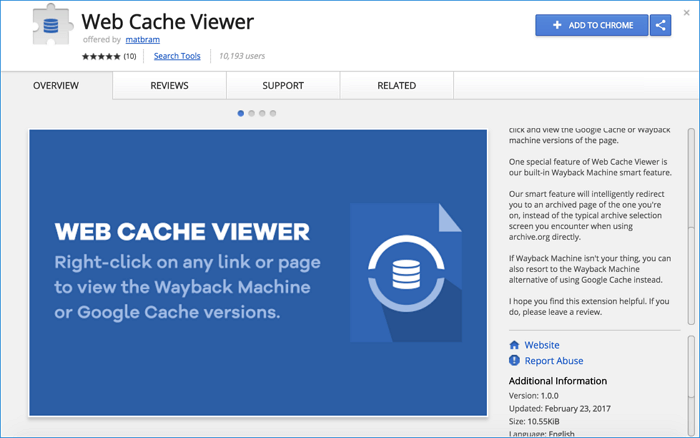
View Chrome Cache Using Third-Party Software
If the first two solutions don't work, you can still have the last chance to view and recover Chrome cache files by using a third-party Chrome cache viewer. As the cache files have no extension, you can't view the content directly unless using a cache viewer.
In general, the Chrome cache viewer locates and reads the cache folder of the Chrome web browser. That is to say; you need to make sure that you have this cache folder on your computer. The Chrome cache location: C:\Users\Username\AppData\Local\Google\Chrome\User Data\Default\Cache in Windows 10. If you have lost the cache folder, don't worry, you can use EaseUS Data Recovery Wizard to retrieve it to recover the Chrome cache files.
How to recover cache files in Google Chrom on your computer
It doesn't matter if you have lost the Chrome cache folder for what reasons, like careless deletion, hard drive formatting, or system crash. You can recover Chrome caches by using EaseUS Data Recovery Wizard.
This EaseUS Data Recovery Wizard has helped millions of people with their data loss problems. It's easy to restore deleted, formatted, or lost data from a hard drive, USB, SSD, SD card, or other devices. Download this program for free, and follow the steps below to restore cache files.
Step 1. Run EaseUS Data Recovery Wizard on your computer. Choose the drive where you lost files and click "Search for Lost Data". If your lost files were on an external storage device, connect it to your computer firstly.
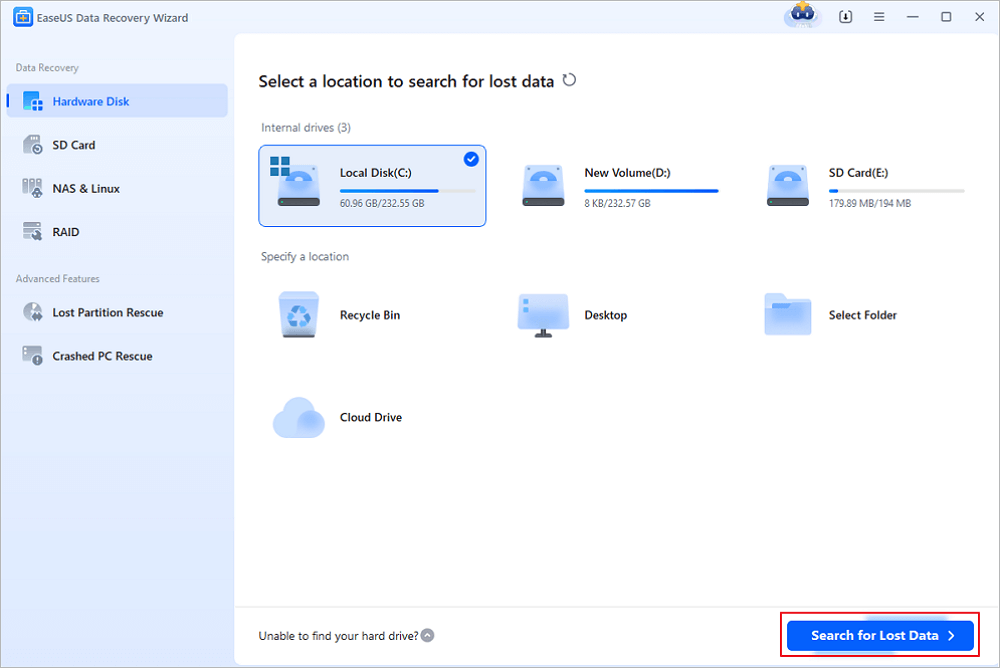
Step 2. The software will quickly scan the deleted files immediately, and then automatically perform a deep scan to find more lost files. After the scan is completed, you can use "Filter" or "Search box" to quickly locate specific file types.
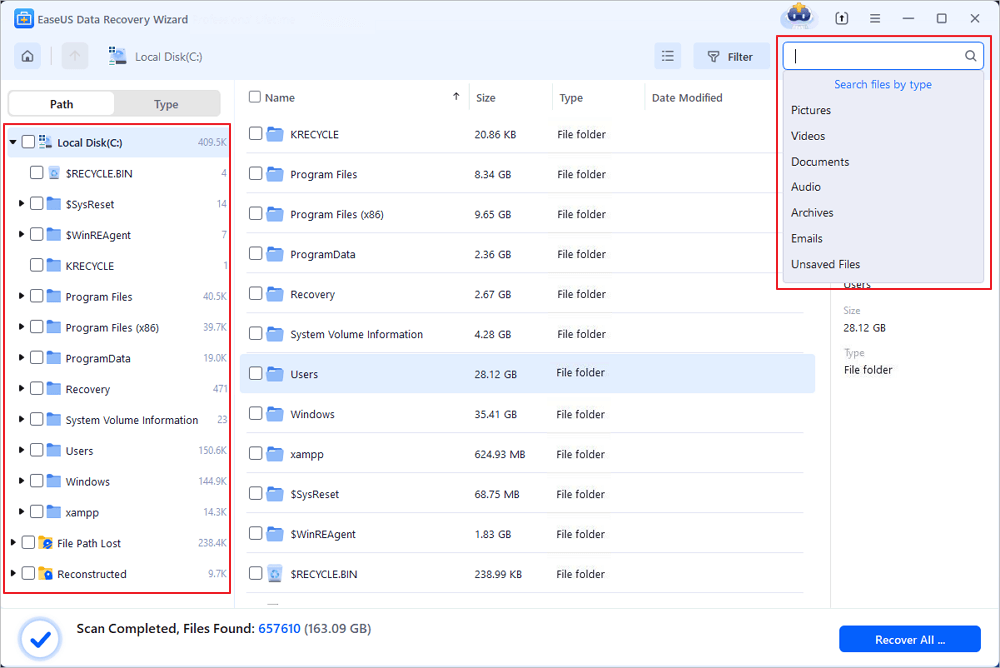
Step 3. Click the "Preview" button or double-click on a file for a full preview. Finally, select the desired files, click "Recover" and choose another safe location or Cloud drive to save all the files at once.
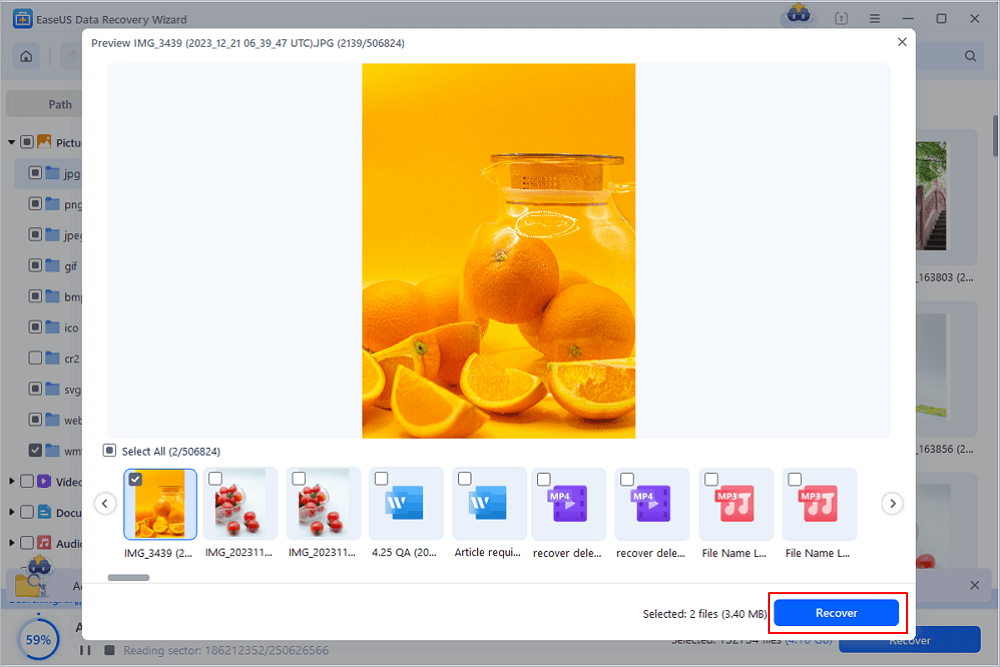
After the cache files recovery, you can use a free cache viewer to open the Chrome caches. ChromeCacheView is one of the third-party solutions available for Windows to view cache from Google Chrome. Note that if you have cleared the web browser cache recently, the cached webpage already disappeared forever.
Was this page helpful?
-
Cedric Grantham is a senior editor and data recovery specialist of EaseUS. He mainly writes articles and how-to tips about data recovery on PC and Mac. He has handled 10,000+ data recovery cases and is good at data recovery of NTFS, FAT (FAT32 and ExFAT) file systems, and RAID structure reorganization. …
-
Tracy became a member of the EaseUS content team in 2013. Being a technical writer for over 10 years, she is enthusiastic about sharing tips to assist readers in resolving complex issues in disk management, file transfer, PC & Mac performance optimization, etc., like an expert.…

20+
Years of experience

160+
Countries and regions

72 Million+
Downloads

4.9 +
Trustpilot Score


Free Data
Recovery Software
Recover data up to 2GB for free!
